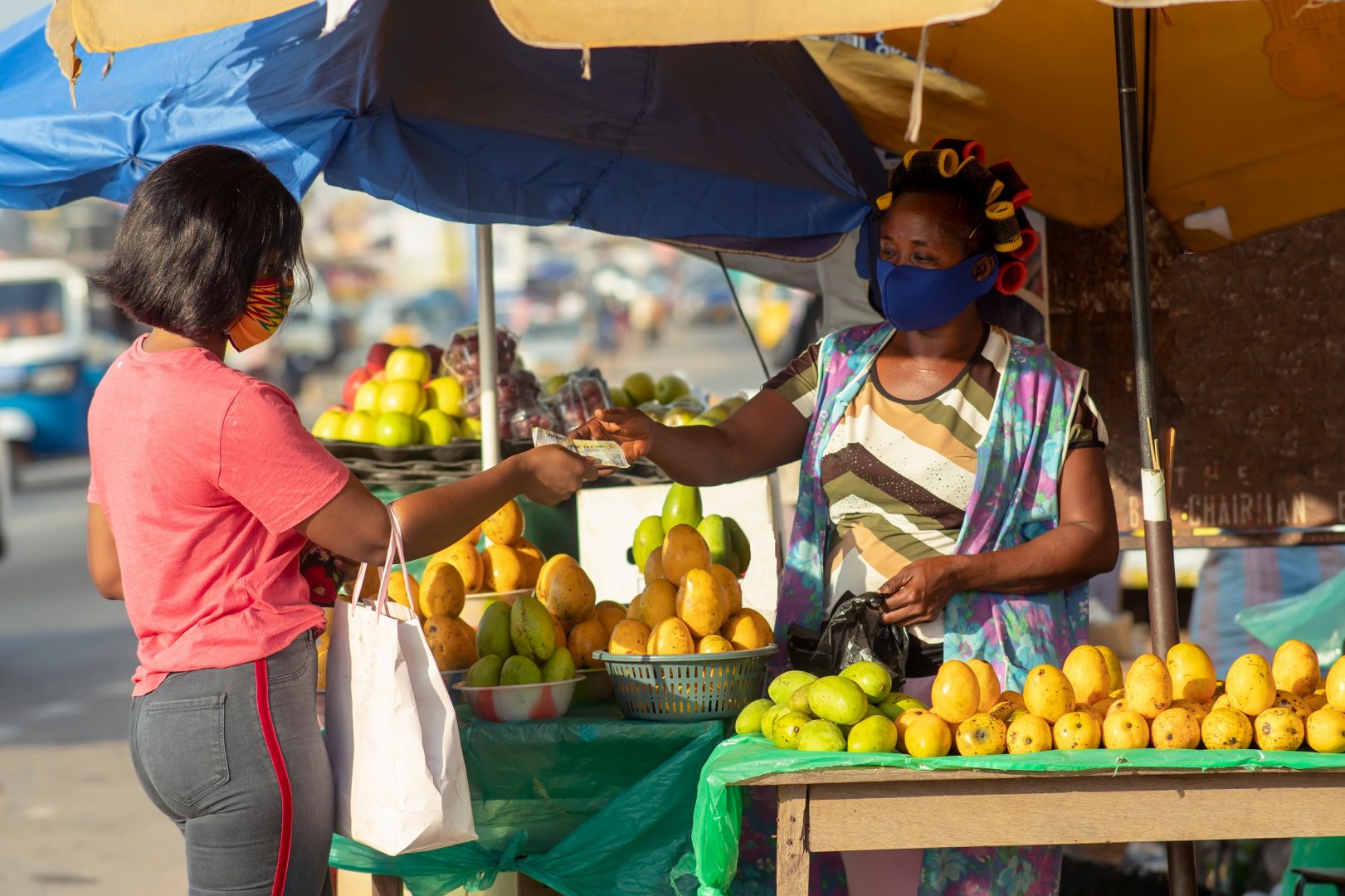This article was originally published by Impact Alpha – you can find it here.
In a world where innovation is revered, it can be easy to forget the value of tried and tested tools. When Covid-19 revealed itself as a global pandemic, CDC turned to one of the oldest forms of international finance to support financial stability with systemic liquidity: Trade Finance. This age-old instrument has not attracted many modern impact investors, yet trade finance, and other forms of invoice or inventory-backed working capital financing, is exactly the type of support businesses need to maintain operations and jobs without jeopardizing financial health by taking on leverage or diluting ownership during a crisis.
Development Finance Institutions have announced more than $12 billion in trade-related COVID-response initiatives as of early July. For impact investors in need of lower risk opportunities that can absorb larger capital allocations, this is just the ticket. But we have yet to see impact investors active in this market. It could be that the multi-layered approach of partnership through banks that on-lend feels too removed from the impact for end beneficiaries. Or is the administrative burden too high for the thinner margin of these short-term transactions?
Historically low default rates of ~0.08% should be compelling for lenders, and this has proven to be one our quickest, most scalable and most prudent tools for supporting systemic liquidity early in the crisis. Investors open to old-fashioned tools could have significant impact – reaching small business at scale – with low risk. Too good to be true? Or just tried and tested?
Meeting needs
Between the health and economic effects of COVID-19, the imposed lockdowns and the oil price crisis, there has been tremendous stress on the financing systems of emerging markets, with small and medium enterprises, or SMEs, at particular risk. According to ITC’s SME report, “SMEs face a bigger risk than larger firms of collapsing or being unable to compete… because they employ so many people, the associated job loss would aggravate the economic downturn created by the pandemic.” With factories shut in lockdown, sales have halted and the cash that would have been generated from such sales has dried up, putting the small companies that provide 70% of jobs in countries around the world under stress. In Africa, two out of three businesses said they had been strongly affected by COVID-19, mostly involving reduced sales (75%) and/or difficulty accessing inputs (54%).
In a crisis, businesses need to weather short-term liquidity constraints with funding that meets this need proportionately. While patient capital in the form of equity and term debt remains relevant, each comes with challenges in a crisis context. Equity investments would likely assign a distressed valuation; term debt could lead to excessive leverage causing issues in the longer term. By contrast, trade finance alleviates the strain on working capital without significantly impacting future capital structuring decisions, helping companies maintain operations through the crisis and position for growth – including with the right capital structure – thereafter. Smaller businesses often do not have access to enough working capital, leading them to pursue alternative and often more expensive financing avenues, or abandoning the trade, reducing growth opportunities for these businesses.
According to the World Trade Organization, world trade is expected to fall by between 13% and 32% in 2020 as the COVID 19 pandemic disrupts normal economic activity and life around the world. The International Chamber of Commerce has warned that as much as $5 trillion of trade credit market capacity will be needed to return trade volumes back to 2019 levels in the wake of the Covid-19 crisis. WTO Director-General Roberto Azevêdo urges that “we need to lay the foundations for a strong, sustained and socially inclusive recovery,” matching the global sentiment to #BuildBackBetter.
Will development finance institutions (DFIs) and commercial lenders be ready and able to meet this growing need? Rudolf Putz, head of the Trade Facilitation Programme at EBRD, told Global Trade Review that “international banks expect there will also be increasing economic problems in emerging markets and they have reduced their limits for lending to emerging markets.” Given the short-term, lower risk nature of trade finance and its systemic importance for SME liquidity, it is more important than ever that banks and other impact investors step up to underwrite new lending to emerging markets, especially as COVID-19 shifts from an acute to a chronic challenge. Laurie Spengler, founder and CEO of Courageous Capital Advisors, echoes this sentiment in ImpactAlpha: “In this uncertain environment, why is it that investees are expected to bear 100% of the risk? Our message cannot be: You are on your own.” With many SMEs being forced to close during this time of market uncertainty, Paolo de Bolle, Global Director of IFC’s Financial Institutions Group, notes that by increasing capacity to deliver trade finance, impact investors “can help businesses maintain their operations during the current crisis and speed their recovery when the pandemic eases.”
Systemic liquidity
CDC’s COVID-response is organised into three pillars:
- Preserve – supporting our partners to safeguard impact and weather the crisis
- Strengthen – scaling up response to the economic and health challenges of the crisis
- Rebuild – a long term partner to the countries where we invest
Within the Strengthen pillar, we developed a Systemic Liquidity strategy to channel capital into markets where foreign direct investment and local lending were seizing up. Since April, CDC has approved $435 million in this strategy for COVID-response partnerships with banks to channel short-term working capital to businesses across Africa and Asia. Of course, local banks are crucial partners in managing what can be a significant administrative burden for these high-volume, low margin transactions. In turn, our investment is structured with incentives to help maintain and increase lending at a time when limiting it would be the easier choice.
In June, CDC announced a $100 million risk sharing facility with Société Générale to boost African trade with a focus on Francophone West Africa. Supporting Société Générale to increase the lending capacity available for existing local bank clients and extend credit to new banks in Africa, the facility will bolster trade finance in hard-to-reach and often overlooked markets such as Mali and Mauritania. This commitment will strengthen the ability of Société Générale to provide critical funding to local importers of sugar and wheat, for example – supporting food security and helping companies through the current economic crisis.
CDC’s $75 million partnership with Absa, announced in July, includes an innovative mechanism to boost trade finance funding to some of Africa’s most vulnerable countries. Trade finance transactions in sectors that are critical to serving people’s basic needs during the crisis – healthcare and food security – will also benefit from preferential terms. The commitment will help maintain consumer access to a wide range of goods and services and allow businesses to continue operating by supporting supply chains and enabling them to import vital equipment and goods.
Deploying capital quickly and at scale in response to this crisis is a strong start, but a critical part of driving impact comes from active portfolio management based on trade data that will reveal how our capital is meeting demand. CDC receives monthly reports on our trade facilities and can analyse impact almost directly after facility launch. We learn quickly whether our impact theses are valid and adjust incentives accordingly, both for existing and for future partnerships. Using trade data, CDC can monitor outcomes as the COVID situation evolves and inform future investment management decisions in real time.
Impact at scale
Larger impact investors that can partner with international banks and launch scalable trade programmes could pioneer a new asset class by tilting trade finance toward priority outcomes such as healthcare or women’s economic empowerment. Importantly, banks should also increase exposures through these partnerships, putting new capital at risk and reaching new borrower segments in need, rather than simply passing existing risk to impact investors. This partnership should be designed to help banks to step up and not to enable them in stepping back.
Bank partnerships for trade finance are most appropriate for institutional investors looking to make sizeable commitments; as a result, the scale of end-beneficiaries will equally be larger. This type of partnership will serve more well-established, “bankable” SMEs that have credit relationships with banking partners. What can niche impact investors do to reach smaller companies that don’t fit the traditional banking model?
As international trade and movement of goods becomes more digital, impact investors can partner with newer financial intermediaries such as TradeTechs and FinTechs to reach further down the value chain and diversify the types of borrowers supported. This could also create a new marketplace to support trade. Local alternative trade financiers, such as Ovamba and Kountable, are better suited to access the SMEs that banks don’t reach and represent an exciting opportunity for impact investors to participate in trade finance. With this potential in front of us, impact investors can capitalise on this tried and tested toolkit and take comfort that their arrival will be innovative itself.









